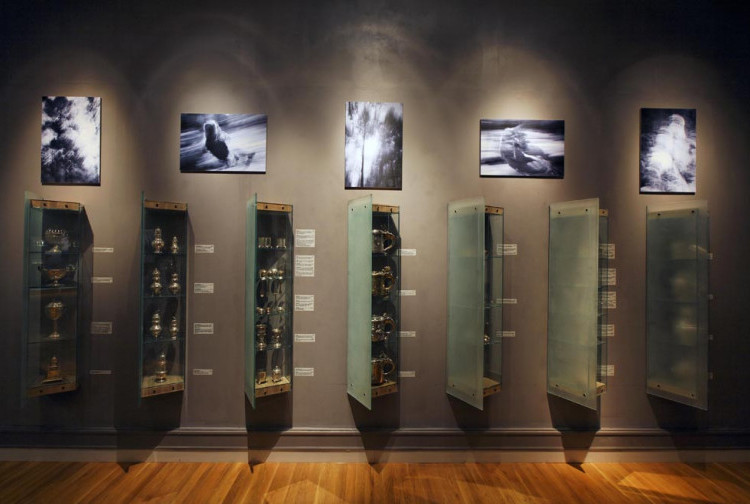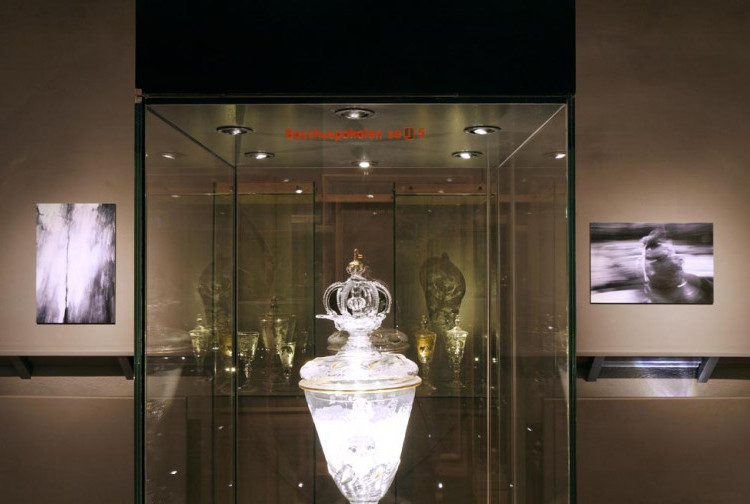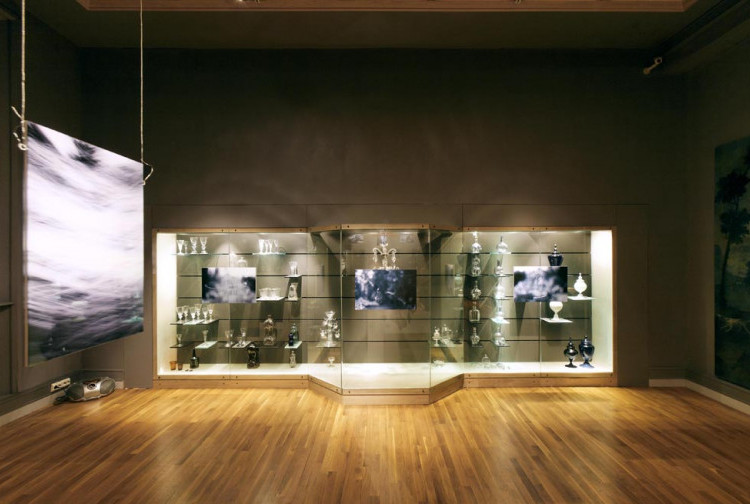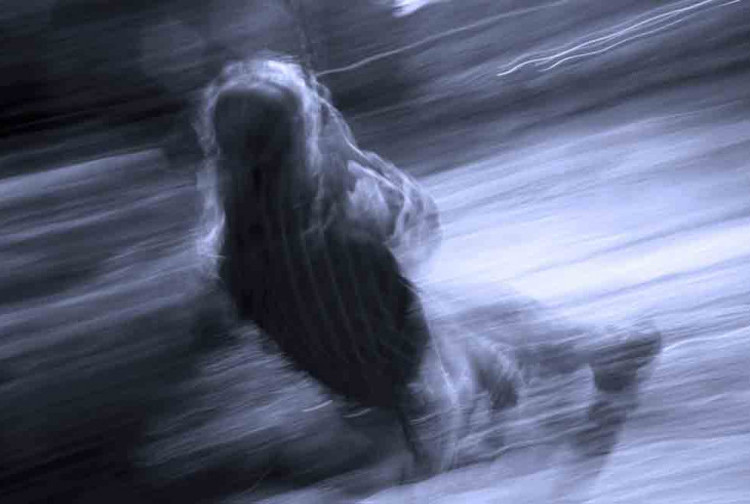Werner Zellien
Werner Zellien (b. 1952) is a German artist living in Norway since 2003. Zellien is a trained photographer in an advertising studio (1969-72) and works in a broad field within photographic practice and art. In addition to his artistic work, Zellien is also an internationally renowned photographer of works of art, a business that is very demanding both to create credible, high-quality reproduction of images, sculptures and installations and of exhibition montages.
Zellien's artistic practice is also wide-ranging. At the heart of the art are precise, nuanced black-and-white images in the documentary tradition. This is perhaps the most famous and internationally most recognized part of German photography. It goes back to classic modernists such as the photographers August Sander, Karl Blossfeldt and Albert Renger-Patzsch, who each in their field created clear, objective representations of portraits, plants and all the world's objects - not least machines and tools - and started a formidable development which has culminated in our time with famous photographers such as Bernd & Hilla Becher, Andreas Gursky and Candida Höfer - just to name a few.
Werner Zellien is thus safely planted in this tradition. What is often emphasized is that this objective, factual, deep-sharp, grayscale-rich - or colorful - photograph shows things as they are supposed to be in reality. This form of photographic work is also very suitable for both social science and scientific studies. Photography is in principle serial, since standard negative and positive formats are used and it must respect fixed limitations that lie in the camera's chamber / housing and lenses. This with the scientifically inspired structural studies also gives a feeling that German, documentary, factual photography is neutral and without artistic temperament, passion and pathos as part of the expression.
The most objective and neutral side of Zellien's art emerges in his new photographs of power stations in Norway. He has also worked with a clinical and enlightened gaze in a series of photographs from Villa Wannsee. This stylish, neoclassical villa by the Grosser Wannsee outside Berlin is today a memorial museum. The reason for this is that this magnificent property was the site of the infamous Wannsee Conference, which took place on January 20, 1942. It was at this meeting that Reinhard Heydrich - head of the National Socialist Security Service (entitled Reichssicherheitshauptamt) - confirmed the plan for "the final solution ”, namely the industrial extermination of Europe's Jewish population. It is the well-preserved villa, as it appears as an empty, pointless witness to a gruesome incident, which is the theme of Zellien's photo series. This will be shown this autumn in Bergen Art Museum between 3 October and 29 December. Zellien has named the Bergen exhibition Villa Wannsee - Melancholy Grandeur. The images have the same rigorous, regular and precise expression, as the structure that made the horrific genocide possible. The images seem shady and silent, filled with the loss of meaning that characterizes the melancholy.
With this combination of serial investigation, of systematic and sharply focused representation of a famous building, an architectural monument in itself, with such a deep human feeling as melancholy, Werner Zellien manages to add to German documentary photography a soulful depth that is usually lacking. It is this deep understanding of the tragedy of human life and history that also causes Zellien to capture the emotional and existential depth in small, trivial, everyday events.
The exhibition in Nøstetangenrommet has been called by the artist Huske. As a German-speaker, with a newfound mastery of the Norwegian language, he is very aware of the nuances and double meaning of the new language. For him, the double meaning of the word remember is perhaps more conspicuous than for those who have Norwegian as their mother tongue. For us, the meaning of the word is automatically governed by the context in which it is used. Therefore, one does not always remember that remembering uses exactly the same word and sound image as remembering. When Zellien - who with artistic alertness and linguistic curiosity sees the daughter remember in the garden, the second meaning of the word emerges: This is something I must remember… .. And thus it becomes to remember that the daughter remembers an experience that will necessarily bring in quite deep feelings. To remember in an apple orchard is something very fleeting, something very beautiful and life-affirming, filled with excitement, life and sometimes with cries of joy. But the fleeting is exactly what makes the adult realize that this phase of play, effortless joy and seriousness, is doomed to disappear.
The joy of remembering is the very principle of pleasure performed through the ever stronger feeling of a lift through repetition: Another turn, even higher, even faster. The poet TSEliot has given a complete depiction of the joy of remembering under and in an apple tree. In the short poem "New Hampshire" from his series with Landscapes, an archetypal memory scene is depicted as follows:
- Children's voices in the orchard
- Between the blossom- and the fruit-time:
- Golden head, crimson head,
- Between the green tip and the root.
- Black wing, brown wing, hover over;
- Twenty years and the spring is over;
- To-day grieves, to-morrow grieves,
- Cover me over, light-in-leaves;
- Golden head, black wing,
- Cling, swing,
- Spring, sing,
- Swing up into the apple-tree.
A lot happens in this poem. The joy and the present are played out against the passage of time and missed. Eliot plays on the double meaning of the word "above" which means both "higher than" and "past". In this condensed poem - which is reproduced in its entirety here - the words' own sound begins to generate a poetic movement in the advancement of the words in the poem itself - so that the poem swings like a melody. The word wing, leads to the word cling, which in turn generates the word swing, then comes, spring (which means both spring and bouncing), sing and finally swing again, this time in the sense of a memory movement up between the branches of the apple tree. Therein lies an implicit recognition of repetition as something associated with erotic awakening and the transition from childhood to adolescence and adulthood. In adult life comes longing and grief: To-day grieves, to-morrow grieves.
The melancholy and bittersweet mood that lies in watching children remember is an important basic mood in Werner Zellien's memory photographs. The movement of the swing becomes like a ticking bell, like grains of sand flowing through a lifelong hourglass. As Eliot says in the cycle of poems Four Quartets, written between 1935 and 1942: "In my beginning is my end."
And it is precisely this repetition that is produced in the soundtrack that accompanies this exhibition, where Zellien has sampled church music and put it together in a repetitive movement of rising and falling tones, a smooth, in principle continuous up-and-down movement that turns forward and turns back. That this is old music, serious, spiritual music related to the mysteries of life, emphasizes the depth of this art project.
In the series of memory images, there are two types of subjects that alternate. The horizontal pictures show the daughter remembering. Due to the long aperture time and the fast swing movement, there are movement tracks on the film. The long, curved traces of movement carry with them time, that the movement is something that happens now, but that quickly passes into the past. In the vertical images, it is the artist himself who remembers, by sitting with the camera with an open aperture and swirling around on the memory board with the camera directed upwards towards the two ropes that are tied together into one rope. With this method, Werner Zellien adds something new to contemporary photography. His own position behind the camera, as the one who sees and photographs, is made visible in the finished photographic recording. Far from being a neutral, objective registrar of a given reality, an active, subjective human being is shown who takes part in and engages in the dizzying event to be photographed. These images therefore show a phenomenological study of being a committed photographer. The image shows how the photographer experiences the spinning of the memory movement and how he performs an action as much as he registers a subject.
This is located quite a distance from industrial photography and the Wannsee Suite. But the feeling of longing and melancholy that Wannseebildene expresses has in Huskebildene become an explicit part of the artistic action itself.
More traditional is the approach in the gripping triptych cone that is shown directly on the glass wall in the large mounted in the Nøstetangen room. These photographs show the imprint of a bird that died in the cash encounter with the transparent window. The fluctuating bird flight that is such an important part of Eliot's poems is stopped abruptly here. The bird's head, neck and wings are marked in the dust on the outside of the window, clearly legible in the side sunlight of the falling sun. It is as if the sunlight itself evokes the image. This is also an unusual photographic project, where the very apparatus of photography with all its glass surfaces (lens, film, display screen - not to mention the glass plate negatives of the past) - plays in this subtle depiction of the absence of life as a beautiful imprint, visible a short while on the window before rain, chamois leather and other light angles erase the track (for good).
Once again, Drammens Museum has the pleasure of showing a project that really succeeds in entering into a dialogue with the expression and meaning of this beautiful museum room. The delicate, bright outline of the bird is preserved through the photographic print in the same way that the 18th-century most gifted engravers have carved their emotions like florlette veils and elegant scratches into skirt glass. With a mixture of beauty and longing, of the feeling of life and recognition of death, both Nøstetangenrommet and Werner Zellien's exhibition Huske show that culture is the place that has the task of both giving promises of life and happiness and preserving memories of that which is irrevocably past. It is this complicated and heavy task that gives culture its value and irreplaceability
The music you hear is Zellien's Gesualdo, 2008. This is sampled and reconstructed from Don Carlo Gesualdo's (1566-1613) Madrigal I Tormenti d'Amore.
Åsmund Thorkildsen
Museum director
Venue
Monday to Friday 11.00 - 15.00
Wednesday 11.00 – 18.00
Saturday 11.00 – 16.00 (free admission)
Sunday 11.00 – 16.00





